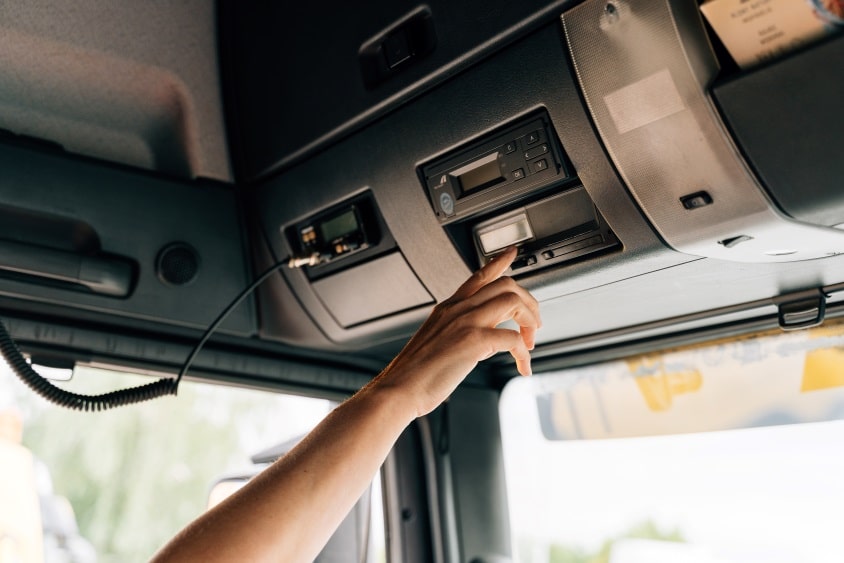In today’s business landscape, the significance of sustainability has evolved from a mere trend to a fundamental component of strategic planning, especially for companies managing fleets of any scale.
As global industries increasingly acknowledge their environmental responsibilities, fleet telematics has emerged as a vital tool in shaping the future of sustainable fleet management.
This detailed exploration outlines the multifaceted benefits of fleet telematics, emphasising its role in fostering a more sustainable future for businesses.
What is sustainable transport through telematics?
Fleet telematics plays a crucial role in minimising the environmental impact of fleet operations.
With growing global attention to climate change, organisations utilising fleet vehicles (a technology that uses GPS tracking and onboard diagnostics (OBD) to monitor a fleet of vehicles in real-time) are challenged to implement technologies and practices that effectively reduce their carbon footprint.
Read more about what telematics is.
Fuel Card Services telematics solutions provide actionable insights and innovative tools that help fleets comply with environmental regulations while promoting sustainable practices.
Moreover, the integration of artificial intelligence within these telematics systems enhances predictive capabilities, further supporting sustainability initiatives.
Fleet telematics and fuel efficiency
One of the most significant advantages of fleet telematics is its ability to optimise fuel consumption and thereby decrease carbon emissions.
By utilising advanced routing algorithms, telematics systems ensure that vehicles are directed along the most efficient routes, which significantly reduces unnecessary travel distances. This optimisation translates to lower fuel usage and a decrease in harmful emissions.
Reduced car idling
Additionally, telematics can identify and address excessive idling, an often-overlooked contributor to fuel waste and emissions.
By analysing driving patterns, fleet managers can implement programs that reward drivers for adopting more fuel-efficient habits, ultimately promoting a culture of sustainability within the organisation.
Enhancing driver behaviour for sustainable transport
Telematics platforms provide fleet managers with the tools necessary to monitor driver behaviour closely.
Reducing car speeding, aggressive acceleration & hard braking
By assessing driving actions such as speeding, aggressive acceleration, and harsh braking, fleet managers can identify areas for improvement.
Utilising this data, companies can develop personalised training programs aimed at enhancing driver performance. This proactive approach not only leads to safer driving practices but also contributes to a reduction in fuel consumption and CO2 emissions, reinforcing the fleet’s commitment to environmental sustainability.
Promoting effective fleet servicing
Regular fleet maintenance is essential for ensuring that vehicles operate efficiently and remain environmentally friendly throughout their operational lifespan.
Telemetry systems
Telemetry systems facilitate predictive maintenance by analysing vehicle performance data and anticipating maintenance needs before they become critical. This proactive strategy helps keep vehicles running at optimal efficiency, extending their lifespan and minimising environmental impact.
By ensuring that all vehicles are maintained properly, organisations can further reduce their carbon footprint and contribute positively to environmental goals.
Facilitating the transition to sustainable fuels
Transitioning to alternative fuels is a complex and often challenging endeavour that requires meticulous planning and execution. Fleet telematics can provide critical insights that assist in developing effective energy transition strategies tailored to an organisation’s unique operational dynamics.
By analysing usage patterns across various vehicles in the fleet, businesses can determine which vehicles are best suited for transitioning to alternative energy sources, identify the most appropriate types of fuel for their operations, and understand the necessary infrastructure changes required for a successful transition.
Boosting business reputation and marketability with sustainable transportation
Adopting sustainable fleet management practices through telematics can significantly enhance a company’s market reputation.
As consumers increasingly prioritise sustainability in their purchasing decisions, organisations that commit to eco-friendly practices stand out in the marketplace.
This enhanced reputation can attract new clients and top talent, further solidifying the company’s position as a leader in sustainable business practices.
Ensuring scalability and future preparedness with a sustainable car
As businesses grow and evolve, their sustainable fleet management practices must adapt accordingly. Fleet telematics provides the necessary insights and flexibility to scale operations sustainably.
By leveraging data-driven insights, organisations can prepare for current challenges and future regulatory requirements, ensuring long-term success and relevance in an ever-changing market.
The ability to integrate new technologies, develop improved workflows, and foster innovation positions businesses for continued growth while maintaining a commitment to sustainability.
Sustainable transport telematics with Fuel Card Services
Fleet telematics represents a powerful convergence of technology and sustainability, underscoring its vital role in the future of sustainable fleet management. The environmental and economic benefits it offers are integral to fostering responsible business practices.
At Fuel Card Services, we are not just observers in this movement; we are leading the charge towards a sustainable future through sustainable transport telematics.
Discover first-hand how the right technology can propel your fleet toward a sustainable, profitable, and environmentally responsible future. For further information or to tailor a custom solution, please reach out to us today.





